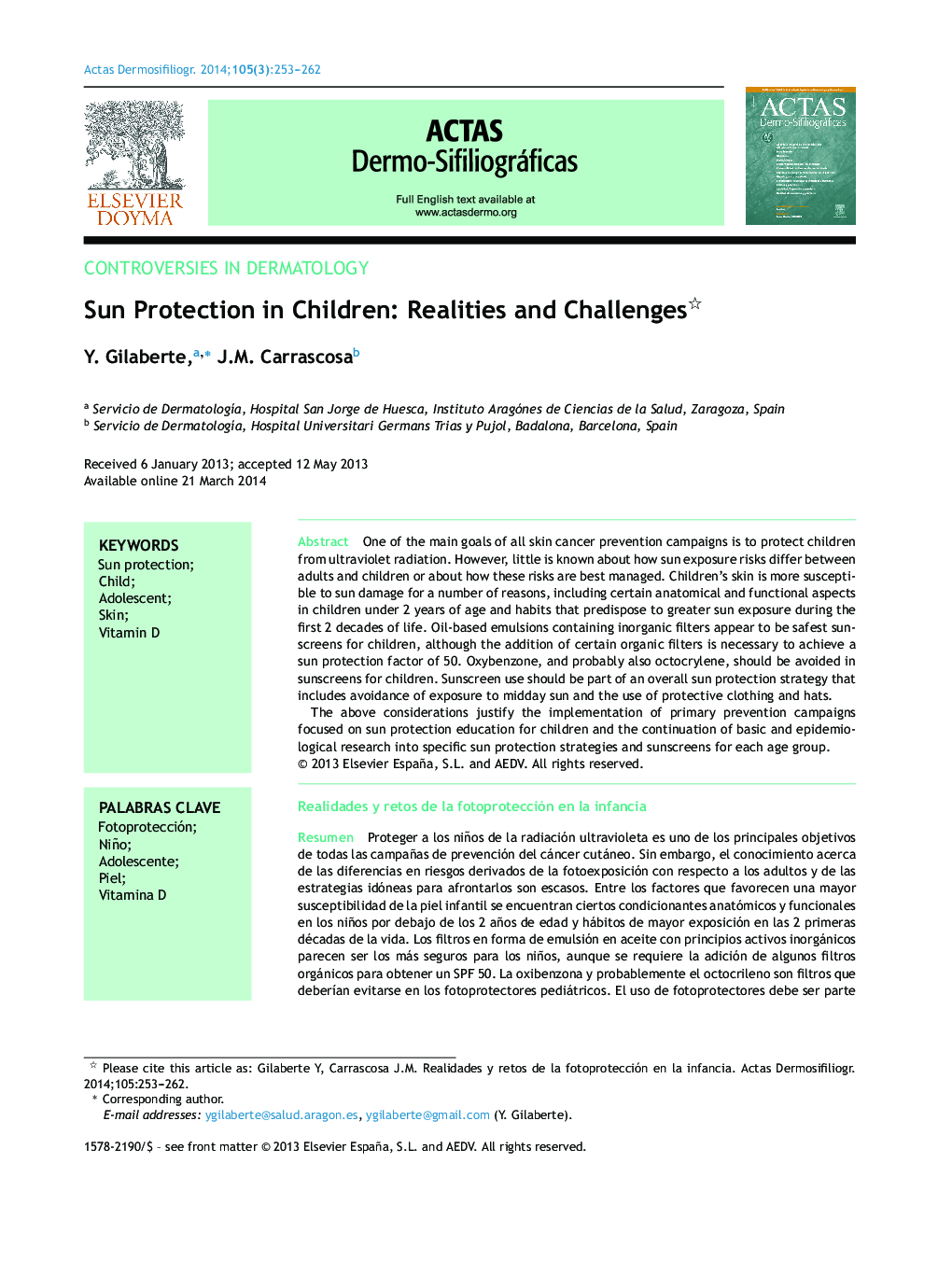| کد مقاله | کد نشریه | سال انتشار | مقاله انگلیسی | نسخه تمام متن |
|---|---|---|---|---|
| 3182820 | 1200671 | 2014 | 10 صفحه PDF | دانلود رایگان |
One of the main goals of all skin cancer prevention campaigns is to protect children from ultraviolet radiation. However, little is known about how sun exposure risks differ between adults and children or about how these risks are best managed. Children's skin is more susceptible to sun damage for a number of reasons, including certain anatomical and functional aspects in children under 2 years of age and habits that predispose to greater sun exposure during the first 2 decades of life. Oil-based emulsions containing inorganic filters appear to be safest sunscreens for children, although the addition of certain organic filters is necessary to achieve a sun protection factor of 50. Oxybenzone, and probably also octocrylene, should be avoided in sunscreens for children. Sunscreen use should be part of an overall sun protection strategy that includes avoidance of exposure to midday sun and the use of protective clothing and hats.The above considerations justify the implementation of primary prevention campaigns focused on sun protection education for children and the continuation of basic and epidemiological research into specific sun protection strategies and sunscreens for each age group.
ResumenProteger a los niños de la radiación ultravioleta es uno de los principales objetivos de todas las campañas de prevención del cáncer cutáneo. Sin embargo, el conocimiento acerca de las diferencias en riesgos derivados de la fotoexposición con respecto a los adultos y de las estrategias idóneas para afrontarlos son escasos. Entre los factores que favorecen una mayor susceptibilidad de la piel infantil se encuentran ciertos condicionantes anatómicos y funcionales en los niños por debajo de los 2 años de edad y hábitos de mayor exposición en las 2 primeras décadas de la vida. Los filtros en forma de emulsión en aceite con principios activos inorgánicos parecen ser los más seguros para los niños, aunque se requiere la adición de algunos filtros orgánicos para obtener un SPF 50. La oxibenzona y probablemente el octocrileno son filtros que deberían evitarse en los fotoprotectores pediátricos. El uso de fotoprotectores debe ser parte de una estrategia fotoprotectora basada en evitar la exposición solar en las horas del mediodía y usar ropas y gorros.Todo ello justifica la implementación de campañas de prevención primaria que eduquen a los niños en hábitos de fotoprotección, y continuar la investigación básica y epidemiológica en la búsqueda de estrategias y fotoprotectores concretos para cada edad.
Journal: Actas Dermo-Sifiliográficas (English Edition) - Volume 105, Issue 3, April 2014, Pages 253–262
